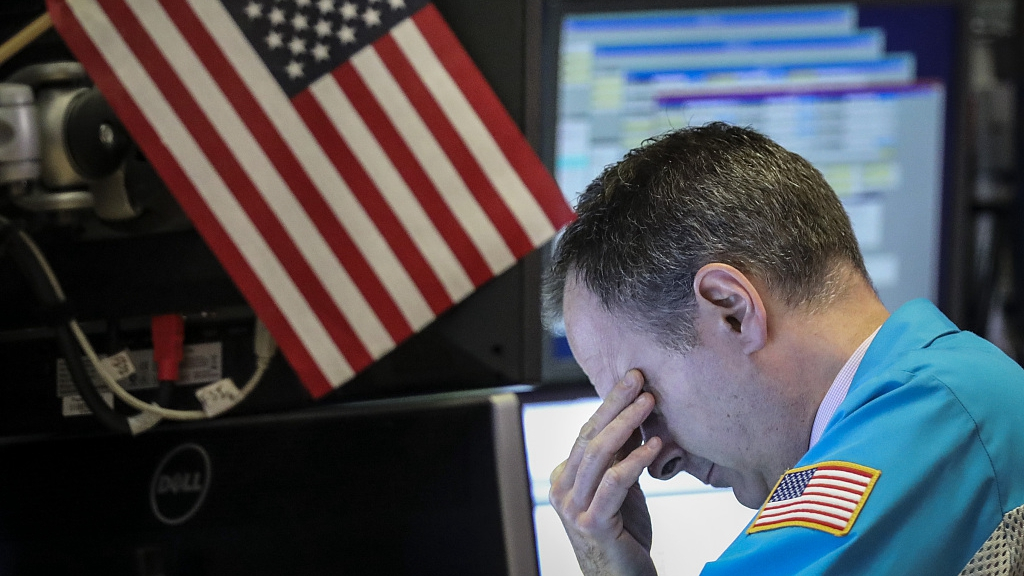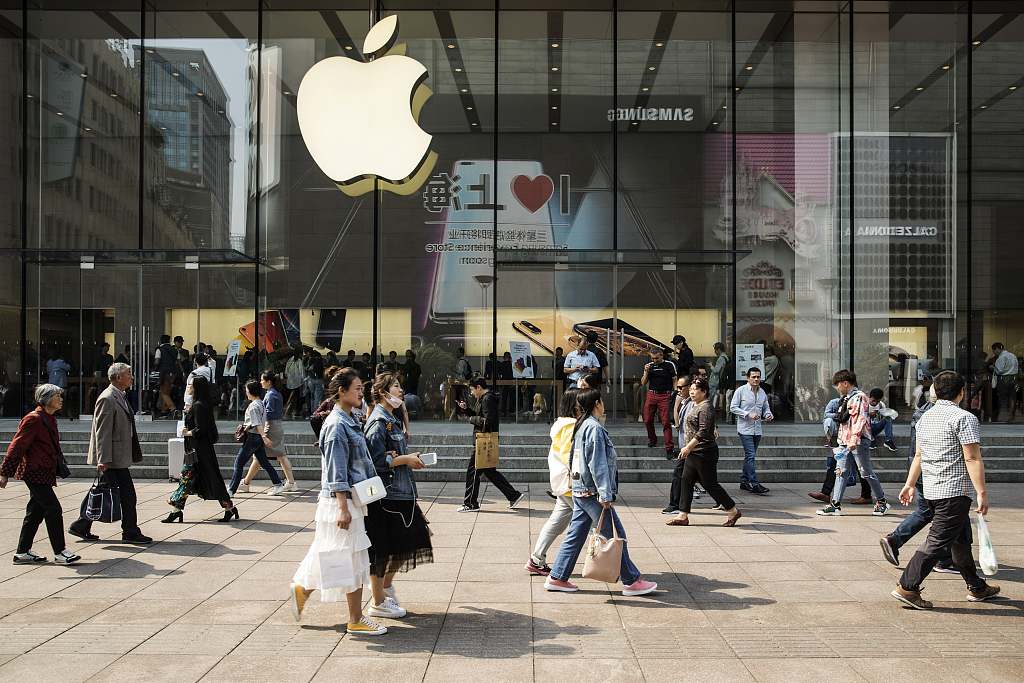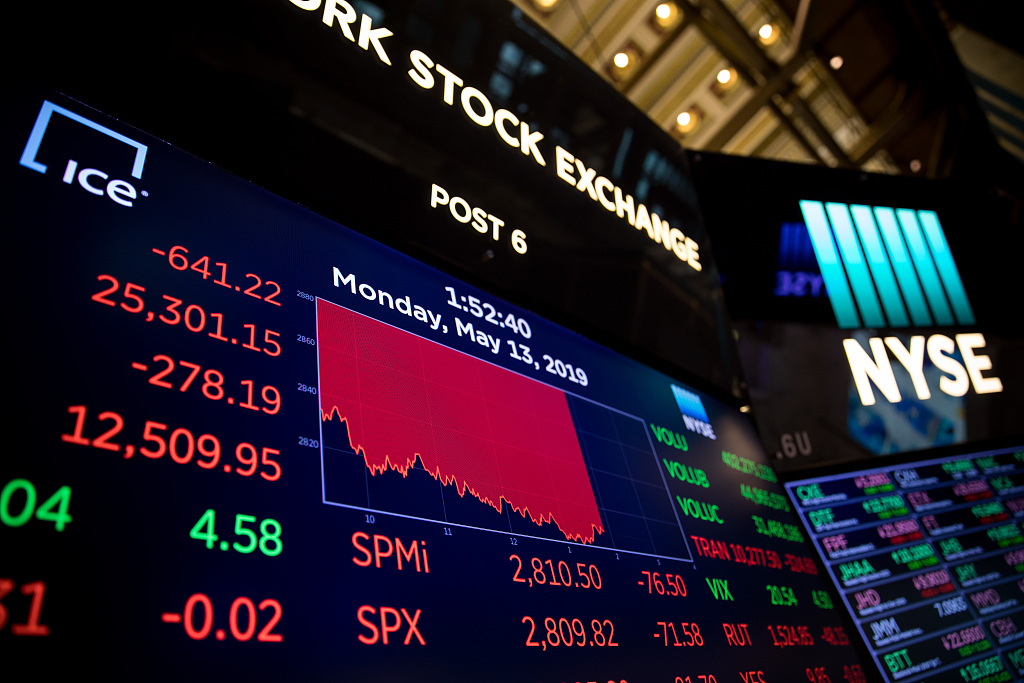
Opinion
12:47, 14-May-2019
How will the trade war hurt U.S. consumers?
Updated
14:28, 14-May-2019
Tom Fowdy

Editor's note: Tom Fowdy is a British political and international relations analyst and a graduate of Durham and Oxford universities. He writes on topics pertaining to China, the DPRK, the UK and the U.S. The article reflects the author's opinion, and not necessarily the views of CGTN.
On Monday, the American stock markets experienced their worst day since January 3, with Dow Jones and The S&P 500 taking heavy losses. The plummet comes in the aftermath of Trump's decision to raise tariffs on China in an escalation of his trade war against the country, with Beijing announcing up to 60 billion U.S. dollars of retaliatory levy increases towards unspecified imports from the United States. Attempting to justify his decision, the President has tweeted aggressively about China and has attempted to claim that America is making money from tariffs on Chinese goods, as well as even attributing the U.S. GDP figures to the trade war itself.
The reality, however, has proved different, with even U.S. national economic council chairman Larry Kudlow confessing that the trade battle will hurt American consumers in the long run. But of course, the bigger question is - how and where? As will be outlined below in detail, the United States imports a comprehensive range of household, consumer and day to day products from China which all play a significant role in daily life. With the official list of tariffed items now amounting to over 6000 products, the trade war is not marginalized, but its impact on the household will be unavoidable.

Pedestrians walk past an Apple Inc. store in Shanghai, China, on Thursday, May 9, 2019. /VCG Photo
Pedestrians walk past an Apple Inc. store in Shanghai, China, on Thursday, May 9, 2019. /VCG Photo
First of all, what are U.S. consumers relying on the most from China? In order to demonstrate the full impact of the trade war, one should first look towards the largest and most significant category of imports. Out of the 539 billion U.S. dollars' worth of goods, the United States imported from China in 2019, the largest quantity of items involved in computers and electronics, which constituted 186 billion U.S. dollars.
This category is very broad, and also of course very significant to everyday life. We're talking about computers, smartphones, household appliances such as refrigerators, televisions and so on just to name a few things. With these items subject to tariffs, what the Trump administration fails to inform the public concerning these products is that many of them are manufactured in China on behalf of American companies and brands.
To elaborate on this, let's look at the example of the iPhone. Apple's products are assembled solely in China and are then imported to the United States. The trade war is going to have a punishing impact here. A Morgan Stanley analysis notes that the 25 percent tariffs imposed on the product will now potentially force up its price by 160 U.S. dollars. They further note that if Apple chooses not to increase its cost to offset the damage, then their profits will plummet by 23 percent over the course of a year. It is no surprise on this note that in the midst of markets falling, Apple's share price crashed by up to six percent. An American brand and its consumers are those who are paying the price.

A monitor displays stock market information on the floor of the New York Stock Exchange (NYSE) in New York, U.S., on Monday, May 13, 2019. /VCG Photo
A monitor displays stock market information on the floor of the New York Stock Exchange (NYSE) in New York, U.S., on Monday, May 13, 2019. /VCG Photo
Of course, what about the counter arguments? Although the Trump administration is repeatedly claiming that companies can simply “manufacture in the United States” or “somewhere else” instead this is also much more complicated and expensive than the White House claims it to be. A Morgan Stanley report further noted, "given the reliance on China's established, low-cost labor force and expertise in manufacturing/tooling, a large-scale move out of the country would not only be costly but could take multiple years to complete, potentially raising the odds of execution risk, in our view.”
This means that there is no quick fix to the problem of tariffs. Prices will increase unavoidably and hit ordinary people. As Jim Estill of Danby appliances noted in an interview, "Any tariff would simply result in a cost of product increase to the U.S. Consumer. Many of the products we sell are small and lower cost in nature and will impact the average working class resident, elderly and students the most."
So when we consider the broader 6000 items which are now being tariffed at 25 percent, which are too many to name, that ultimately spells big trouble for Americans. That goes without considering the damage Chinese retaliatory damages will do to American agriculture. But ultimately it should be known: the trade war is being waged on a great deception, a deception that China's trade surplus with the United States was purely based on “cheating” and "ripping off."
Rather, the true picture was that China's enormous labor force and cheap production costs allowed American companies to produce and import cheap consumer goods which benefitted the lives of ordinary people, keeping down inflation accordingly and allowing consumption to flow. It was not a problem but in fact a huge benefactor. Now, that avenue is being forcibly taken away. The necessities of day to day life are about to get vastly more expensive in the United States, squeezing households and hurting families.
(If you want to contribute and have specific expertise, please contact us at opinions@cgtn.com)

SITEMAP
Copyright © 2018 CGTN. Beijing ICP prepared NO.16065310-3
Copyright © 2018 CGTN. Beijing ICP prepared NO.16065310-3